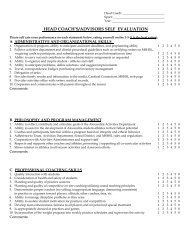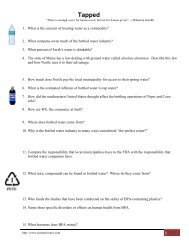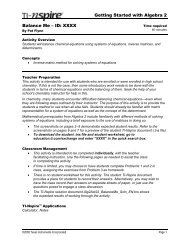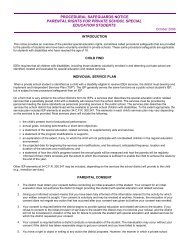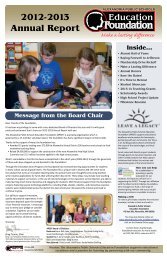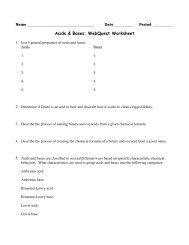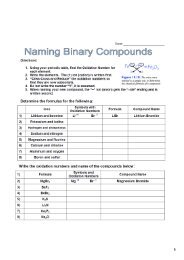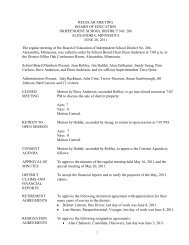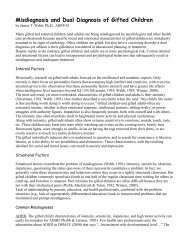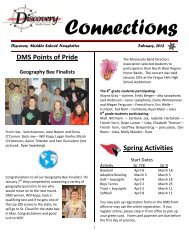Chapter 4 - Implementing a System of Research-based Interventions
Chapter 4 - Implementing a System of Research-based Interventions
Chapter 4 - Implementing a System of Research-based Interventions
Create successful ePaper yourself
Turn your PDF publications into a flip-book with our unique Google optimized e-Paper software.
<strong>Chapter</strong> 4 <strong>Implementing</strong> a <strong>System</strong> <strong>of</strong> <strong>Research</strong>-Based <strong>Interventions</strong><br />
2. If targeted intervention supports are needed, which level <strong>of</strong> support is warranted?<br />
Given the size <strong>of</strong> the gap between the student’s performance and the<br />
desired skill level, what will it take to accelerate student learning to reach the<br />
performance goal?<br />
What is the magnitude <strong>of</strong> problem that needs to be solved? Staff should refer<br />
to team guidelines for selecting the intensity <strong>of</strong> intervention.<br />
What intervention is most appropriate to meet needs indicated by the data?<br />
Will the intervention provide support that is proportional to the extent the<br />
student is behind?<br />
Is the intervention rigorous enough to resolve the learning issue? The<br />
process may be undermined if interventions are not delivered within the<br />
designed time or when they are not powerful enough to address the<br />
problem.<br />
As previously discussed in the section Building <strong>System</strong>s <strong>of</strong> SRBI, the dimensions<br />
that teams may use to differentiate levels <strong>of</strong> support include:<br />
<br />
<br />
<br />
<br />
<br />
<br />
Duration <strong>of</strong> intervention (weeks).<br />
Frequency <strong>of</strong> intervention (daily or weekly).<br />
Amount <strong>of</strong> minutes provided per session, research recommends 15 minutes per<br />
every 13 percentile points below the 50 th percentile on standardized measures<br />
<strong>of</strong> achievement (Fielding, L. Kerr, N. Rosier, P., 2007).<br />
Size <strong>of</strong> instructional group (1:1, 2:3, 3:5, etc.).<br />
Specificity and focus <strong>of</strong> instructional goals (one skill or comprehensive<br />
instruction in key areas).<br />
Proportion <strong>of</strong> intervention where students receive direct instruction from the<br />
teacher:<br />
o<br />
o<br />
Number <strong>of</strong> opportunities to respond.<br />
Immediacy <strong>of</strong> corrective feedback.<br />
Note: Team decision rules may provide flexibility in allowing for immediate placement <strong>of</strong> a<br />
student in tertiary intervention supports. However, an exceedingly large gap does not<br />
necessarily suggest the need to evaluate for special education is urgent. Additional factors<br />
as to why the learning problem exists will need to be considered to make a determination<br />
<strong>of</strong> urgency.<br />
Minnesota Department <strong>of</strong> Education Draft 4-32



